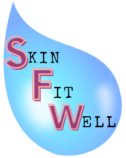Table of Contents
Do Retinoids Help With Post-Inflammatory Erythema?
Retinoids are a staple treatment in skincare for a multitude of issues. They are prescribed for acne, pigmentation, and aging. They have a lot of data behind them to support their use in skin care.
Since post-inflammatory erythema has little to do with pigmentation of the skin, and more to do with skin redness, retinoids may not help post inflammatory erythema as much as some other ingredients would. However, it may help to prevent inflammatory acne, which in turn would prevent post-inflammatory erythema.
Post-Inflammatory Erythema (PIE)
I have a few other blog posts touching on this topic. It is a topic that resonates with me as I had suffered from PIE since I began getting inflammatory acne in my early teenage years.
It is a skin condition characterized by redness and inflammation. It often appears as red or pink spots on the skin that fades away temporarily when pushed on, and then comes back to the surface a short time afterwards.
This is different from scarring or hyperpigmentation of the skin. It is not characterized by darker pigmentation in the skin from acne.
It is caused by damage to the tissues from inflammatory breakouts, and blood pooling in the capillaries below due to the reaction to inflammation.
How Long Does PIE Take To Go Away?
PIE can take a long time to go away on its own. In fact, it may never go away on its own if you do not treat the skin properly and nourish the skin barrier.
Typically, PIE lasts anywhere from a few weeks (if it was a small breakout) to years (if you have severe inflammatory acne).
It can be difficult to treat, especially if you do not have the right skincare routine in place. Often, inflammation of the skin becomes worse with environmental stressors such as pollution, UV rays, and harsh skin care products.
These dehydrate the skin, cause flaking and redness, and can accentuate discolouration and red spots on the skin.
What Ingredients Can Cure PIE?
As mentioned previously, you need to incorporate ingredients that will nourish your skin barrier and reduce inflammation. These are the two most important focuses of your skin care routine. These two things are important for the following reasons:
- Taking care of your skin barrier will reduce dryness and flaking. Your skin barrier works to protect the skin against harsh weather, abrasive skincare products, and other environmental stressors. It keeps the skin cells intact and creates a sturdy structure to keep microbes and other types of infection-causing bacteria out. By introducing moisturizing and nourishing ingredients into your routine, you reinforce the skin barrier and create the look and feel of bright and hydrated skin that is able to fight off redness and dullness.
- Using products that are specifically formulated to reduce inflammation in the skin can be beneficial for those suffering from redness from PIE. There are many ingredients on the market that will soothe skin and make the complexion look more even, thus making your skin look and feel less inflamed and irritated. You want to avoid any skin care products that contain irritating ingredients that can further exacerbate skin redness and inflammation.
Ingredients like hyaluronic acid, ceramides, niacinamide, and occlusives like Vaseline, ointments and wax-based products can be used to soften skin cells and repair the skin barrier.
Find an in-depth explanation of how you can use Vaseline to improve PIE here. In addition, you can read this blog post on how to repair a damaged skin barrier using hyaluronic acid.
Retinoids
Retinoids work by binding to retinoid receptors on the surface of the skin, and turning on genes that are involved in the process of skin shedding.
Retinoids help to increase the rate at which dead skin cells are shed, and therefore, are beneficial in clearing pigmentation, smoothing the skin, and providing a brighter complexion.
As mentioned above, retinoids may not help much in clearing PIE, as it is not caused by darkening pigmentation of the skin.
However, it should be noted that retinoids can decrease inflammation in the skin by preventing inflammatory acne.
A major cause of inflammatory breakouts happens when dead skin cells clog the hair follicles.
When this occurs, redness and inflammation arise, causing an acne bump. Retinoids work to desquamate (shed) these skin cells to prevent inflammation from occurring. In this way, retinoids can be used as a preventative measure for avoiding PIE caused by acne breakouts.
How to Use Retinoids in Your Skin Care Routine
Retinoids are best used at nighttime. Since they may cause skin sensitivity and some initial redness and peeling, it is better to use it at night when you can add heavier moisturizers to your routine to combat this dryness.
In addition, the skin repairs and rejuvenates itself during your sleep, so you can rest assured that retinoids are being put to good use while you are asleep.
Also, the mornings can be quite harsh on the skin when exposed to UV rays from the sun, so it is best to load up on sun protection and skip retinoids in your morning routine to reduce the chances of irritation and excess redness or drying.
Reference

